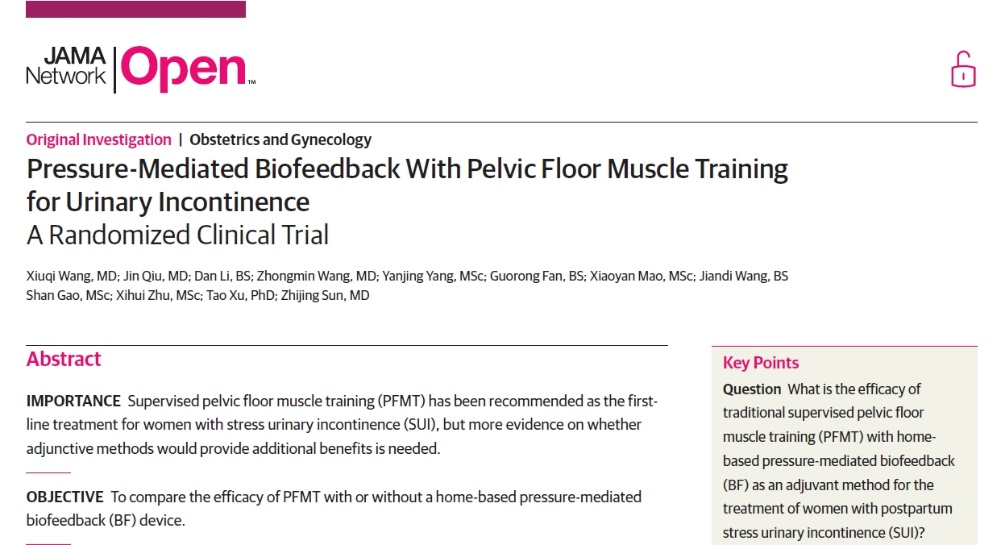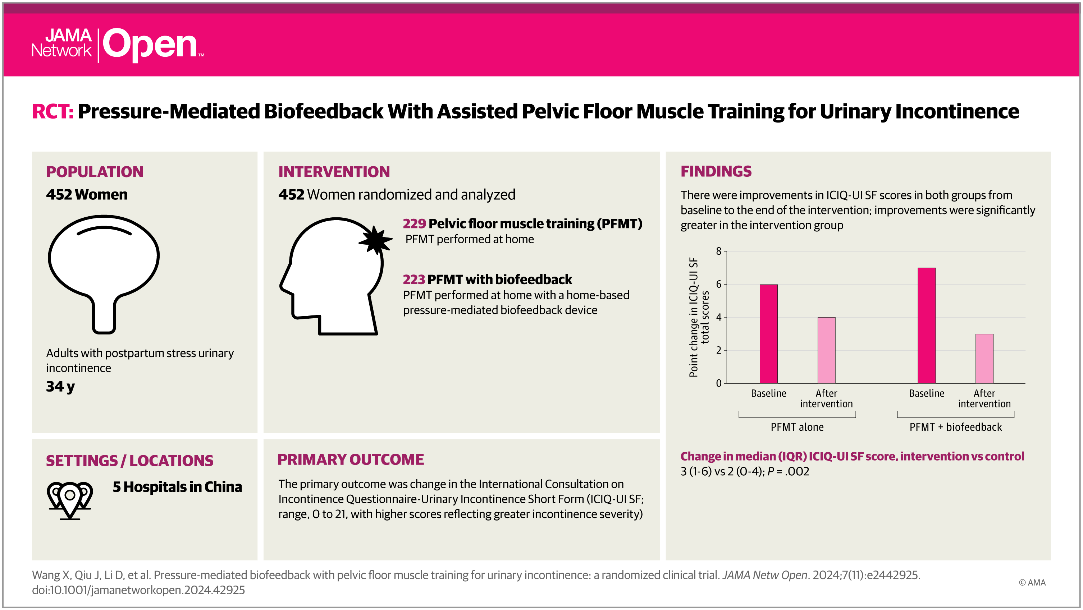On November 5, 2024, the team led by Professor Sun Zhijing, head of the General Gynecology Center under the Department of Obstetrics and Gynecology, PUMCH published results of a PUMCH-led nationwide multicenter RCT in JAMA Network Open (IF: 10.5). The study compared the efficacy of home-based pelvic floor muscle training (PFMT) alone versus PFMT combined with a wearable biofeedback device for postpartum urinary incontinence. Results showed that patients using biofeedback training as an adjuvant method experienced significantly reduced urinary incontinence severity, with higher cure rates, improvement rates, and stronger pelvic floor muscle strength.

26% to 63% of women experience urinary incontinence for the first time during pregnancy or the postpartum period. Physician-supervised PFMT is the first-line treatment for stress urinary incontinence or stress-dominant mixed urinary incontinence. Biofeedback training for pelvic floor muscles, which uses devices with vaginal pressure sensors to visualize muscle contraction movement and provide immediate feedback, can evaluate training effectiveness. Recently, various forms of biofeedback training, including motion-mediated, EMG-mediated, pressure-mediated, and sensation-mediated feedback, have become common in pelvic floor rehabilitation centers in medical institutions, with multiple home-based wearable devices now available.

To determine the most economical and effective rehabilitation approach for postpartum urinary incontinence patients, the Department of Obstetrics and Gynecology, PUMCH led a randomized controlled trial across five medical institutions nationwide that started in March 2022. The study enrolled 452 postpartum women with urinary incontinence, averaging 34 years old, randomly divided into two groups for a three-month training period. The control group did home-based pelvic floor muscle exercises under physician guidance, while the intervention group combined these exercises with a wearable biofeedback device that displayed real-time training data and images on a smartphone app. Researchers evaluated participants before training and at 3, 6, and 12 months afterward. After three months of training, the control group showed an incontinence improvement score of 2 points, an 8.7% cure rate, a 44.5% improvement rate, and pelvic floor muscle strength of 21cm H2O. The intervention group demonstrated better outcomes with an incontinence improvement score of 3 points, a 20.2% cure rate, a 59.2% improvement rate, and pelvic floor muscle strength of 26cm H2O. All outcomes were better in the intervention group.
Dr. Sun notes that home-based pelvic floor rehabilitation offers significant advantages in privacy and convenience, among others. This study provides evidence supporting the effectiveness of wearable biofeedback devices for home-based pelvic floor exercises. The research team is now conducting further studies to offer more scientific guidance and innovative solutions for home-based rehabilitation of urinary incontinence and related conditions.
Link to the publication: https://jamanetwork.com/journals/jamanetworkopen/fullarticle/2825641
Written by Wang Xiuqi and Fu Tanping
Edited by Chen Xiao
